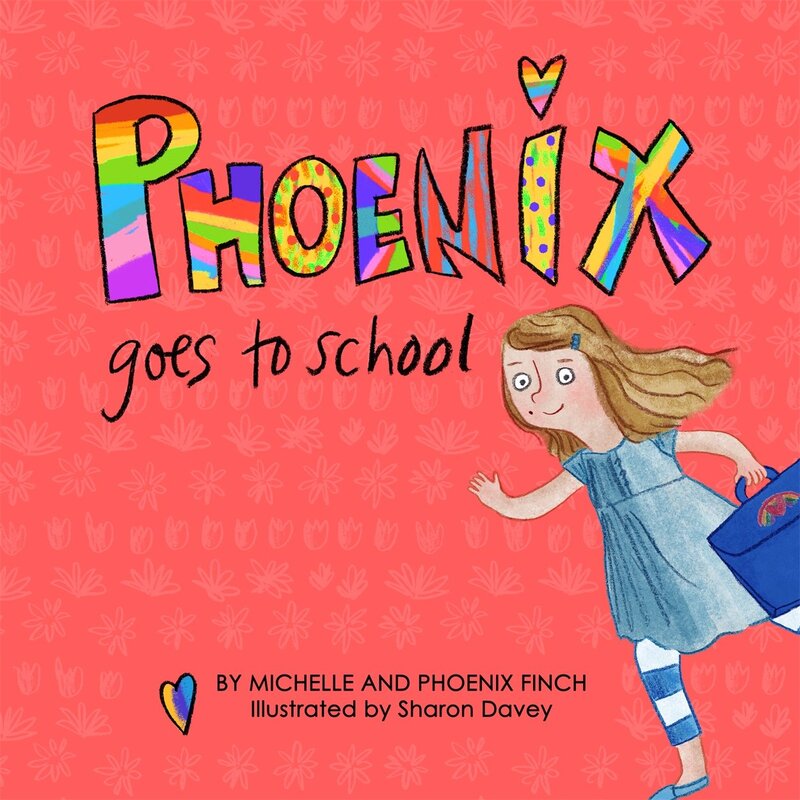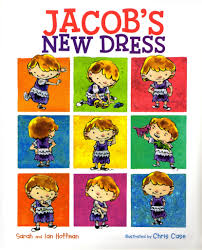|
June is PRIDE month and there could be no better way to celebrate than sharing picture books related to gender nonconformity. This post is a summary of things that have been featured on the instagram page, but you will find some interesting stories and visuals there you may want to check out (thehappybookerin). This all started because my son LOVES lipstick, pink and purple lip balms, blush, nail polish. Everyone around me seems to be on a mission to stop this craziness. Heck! Even I joined in for a few moments. “Nail polish is for girls!” “Boys don’t use lipstick.” but then I asked myself why? Why can't (not even) 2 year olds play with a item that is so easily accessible at home? Why would they not be curious about an item they see their mom using regularly ? While I understand that babies should not be using such products, I already see preconceived notions, biases starting to bubble in his mind. He can easily fill in the blank Only___ wear blush”. Quite frankly, at this point, I think my 23 month old is purely drawn by opening and shutting the lids and seeing the fluorescent colours of the chapsticks. But even if it was more…so what? These societal restrictions must stop. This is a question of freedom of choice, which must start young and start at home. These are the very things we talk about everyday on the News. There is a definitely a correlation between early socialisation and future gaps and inequality in education, employment, income, empowerment, and other significant outcomes of well-being. After @jkrowling's disregard for transgender people, it is even more crucial for us to shed light on sensitive topics like these! Please note that while your child may be gender conforming, I would highly reccomend sharing a few books with them to allow them to understand, be empathetic and have friends who may be gender nonconforming Respect the words people use to describe themselves. Transgender people use many different terms to describe their experiences, and not all terms fit all people. It’s important to ask people what language they want you to use. It’s okay to ask someone for their preferred name and pronouns. Always use the name and pronouns they tell you. If trans people aren’t sure which identity labels fit them best, give them the time to figure it out for themselves. The terms or language a person prefers may change over time, and that’s totally normal and okay. Some definitions: A transgender person is someone whose gender identity differs from their assigned sex at birth. A transgender girl, or transgirl, is a person who was born with male genitalia but identifies as female. A transgender boy, or transboy, is someone who was born with female genitalia but identifies as male. Genderqueer refers to someone who identifies as neither entirely male nor entirely female. a gender-nonconforming person is someone whose behaviors and interests — in things such as clothing and toys — don't match societal expectations for their biological sex. In India transgender individuals are known as Hirjas or Eunichs. They prefer to be known as Kinner or Kinnar (mythological beings of dance and song). They had a troubled history- under British rule, they were criminalized and we see the effects till date. Now, 96% of them are denied respectable jobs and face gendered violence and discrimination at home and public spaces According to Hindustan Times, thousands of children leave school because of non-inclusive spaces. The Swaddle states that, “Trans individuals comprise 0.04% of the total Indian population, roughly 490,000 people, and only 30,000 of them are registered with the Election Commission of India. Denying equal opportunities for a sustainable livelihood to this minority not only has serious social implications but also impacts the economy adversely. The 2016 World Bank report estimated India’s loss in GDP due to homophobia (and by extension, phobia toward the whole LGBTQIA+ community) up to US$32 billion, or 1.7% of the GDP. Research globally shows that LGBTQIA+ inclusion leads to both business innovation and happier workplaces because employees can be themselves at workplaces that constantly protect and empower them.” A list of board books and picture books from a transgender person who is in the Kidlit space :) Thank you Adrien! Also here's a list of parents raising transgender children:
Transgender 101 by Nicholas M Teich Written by a social worker, popular educator, and member of the transgender community, this well-rounded resource combines an accessible portrait of transgenderism with a rich history of transgender life and its unique experiences of discrimination. Chapters introduce transgenderism and its psychological, physical, and social processes. They describe the coming out process and its effect on family and friends, the relationship between sexual orientation, and gender and the differences between transsexualism and lesser-known types of transgenderism. Transitions of the Heart by Rachel Pepper This book contains 32 essays written by mothers of transgender or gender variant children. The Gender Creative Child by Diana Ehrensaft Psychological, medical and anecdotal stories are woven together into an affirmative and loving celebration of gender creative children and their families to provide a thorough view of all the elements of raising or otherwise supporting a gender creative child. The Transgender Child by Stephanie Brill Combining research and personal stories from parents, family members, and transgender people themselves, the authors provide an accessible resource that will prove itself indispensable not only for parents and families of transgender children, but also for anyone who works with young people.
1 Comment
|
Categories
All
Archives
January 2024
Categories
All
|












 RSS Feed
RSS Feed